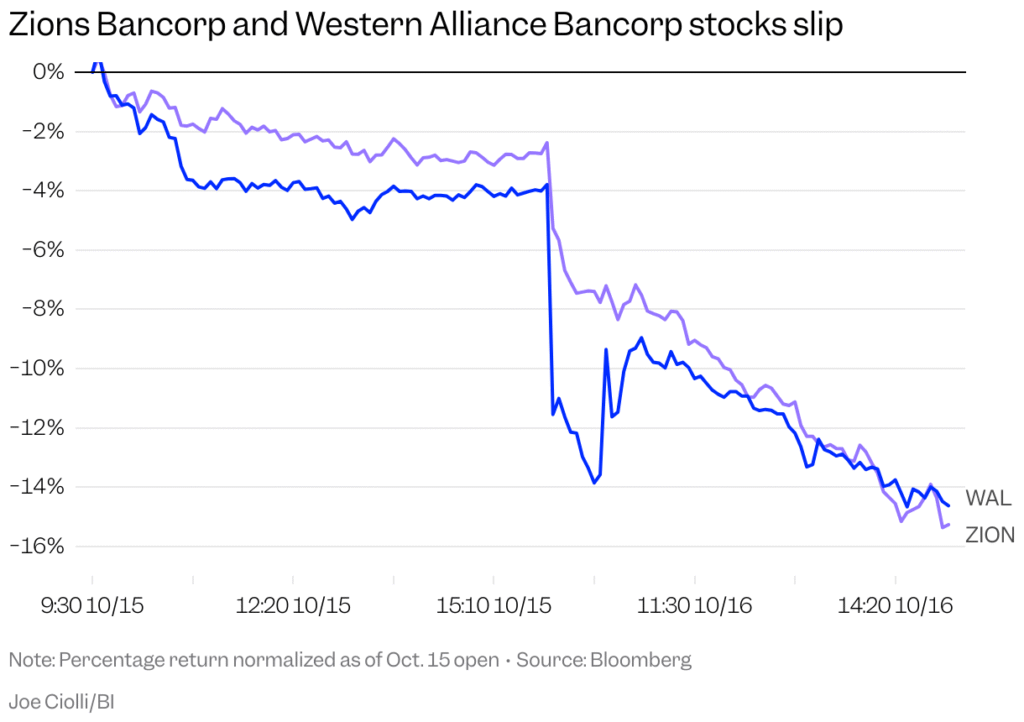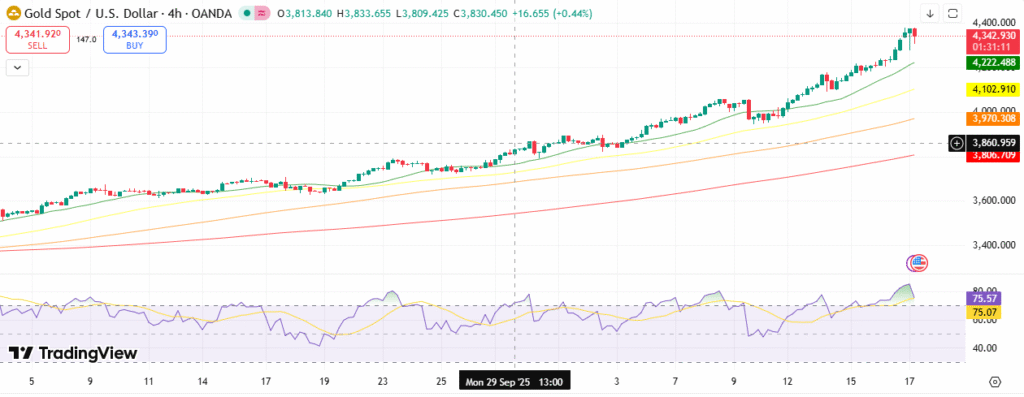Signage outside Western Alliance Bank headquarters in Phoenix, Arizona, March 13, 2023.
Caitlin O’Hara | Bloomberg | Getty Images
Big banks including JPMorgan Chase and Goldman Sachs had just finished taking victory laps after a blockbuster quarter when concerns emerged from an obscure corner of Wall Street, sending a collective shiver through global finance.
Regional bank Zions late Wednesday disclosed a near total wipeout on $60 million in loans after finding “apparent misrepresentations” from the borrowers. The next day, peer Western Alliance said that it had sued the same borrower, a commercial real estate firm called the Cantor Group, for alleged fraud.
The result was a sudden and deep selloff among regional banks, drawing comparisons to the churn of the 2023 banking crisis that consumed Silicon Valley Bank and First Republic. This time around, investors are focused on a specific type of lending made by banks to non-depository financial institutions, or NDFIs, as the source of possible contagion.
“When you see one cockroach, there are probably more,” JPMorgan CEO Jamie Dimon said this week. “Everyone should be forewarned on this one.”
Concerns over credit quality had been simmering for weeks after the September collapse of two U.S. auto-related companies. JPMorgan, the biggest U.S. bank by assets, this week reported a $170 million loss tied to one of them, the subprime auto lender Tricolor.
But it wasn’t until a third case of alleged fraud around loans made to NDFIs that investors were jolted into fearing the worst, according to Truist banking analyst Brian Foran.
“You now have had three situations where there was alleged fraud” involving NDFIs, Foran said.
Dimon’s comments “really resonated with people who were like, ‘Oh, man, the tide went out a little bit, and now we’re seeing who was lacking their swim trunks,” Foran said.

What are NDFIs?
The episode cast a spotlight on a fast-growing category of loans made by regional banks and global investment banks alike. Rules put into place after the 2008 financial crisis discouraged regulated banks from making many types of loans, from mortgages to subprime auto, leading to the rise of thousands of non-bank lenders.
Moving riskier activities outside of the regulated bank perimeter, where failures are backstopped by the Federal Deposit Insurance Corporation, seemed like a good move.
But it turns out, banks are a major source of funding for non-bank lenders: commercial loans to NDFIs reached $1.14 trillion as of March, per the Federal Reserve Bank of St. Louis.
Bank loans made to non-bank financial firms were the single fastest-growing category, rising 26% annually since 2012, according to the St. Louis Fed.
“The surge in NDFI lending was really because all these different regulations added up to say there are a bunch of loans banks can’t do anymore, but if they lend to someone else who does them, that’s OK,” Foran said.
“We really don’t know much about these NDFI books,” Foran said. “People are saying, ‘I didn’t know it was so easy for a bank to think they had $50 million in collateral and find out they had zero.'”
‘Overreaction’ or early?
Part of what’s spooking investors is that, while some of the loan losses disclosed by regional banks have been relatively small, they’ve been near total wipeouts, said KBW bank analyst Catherine Mealor.
“NDFI lending, because of the collateral involved, typically has a higher loss rate, and the losses can come very quickly and out of nowhere,” Mealor said. “It’s really hard to wrap your mind around these risks.”
Mealor said investors have been inundating her with questions around the level of NDFI exposures in her coverage universe, the analyst said. Firms including Western Alliance and Axos Financial are among those with the highest proportion of NDFI loans, according to an August research note from Janney Montgomery.
Still, regional banks are benefitting from an improving interest rate environment and rising mergers activity, which underpin valuations, Mealor said, adding she thinks this week’s stock selloff was an “overreaction.”
“You want to avoid companies that show up high in the screen for NDFI loans,” she said. “There are plenty of high-quality companies in the KRX that are trading at a massive discount.”





